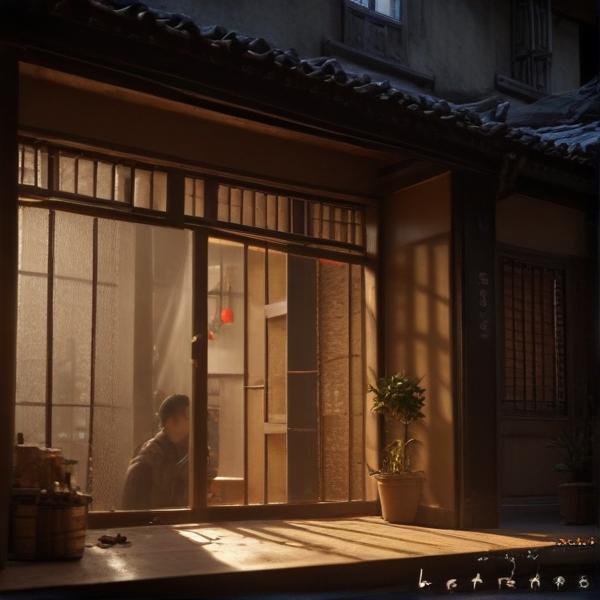基本信息 (Basic Information)
含义与用法 (Meanings & Usage)
中文核心释义 (Core Chinese Meaning): 蚂蚁,一种体形较小、成群结队生活、分工明确的昆虫。
英文核心释义 (Core English Meaning): Ant; a small insect that lives in colonies with clear division of labor.
象形意义 / 为何这么写 (Pictographic Meaning / Writing Rationale)
文言文释义 (Classical Chinese Meaning)
与现代意义相近,主要指蚂蚁,也可引申为微小、卑微之物。Similar to modern meaning, mainly referring to ants and sometimes metaphorically to something small or humble.
深入学习 (In-depth Study)
字源故事 (Origin Story)
字形演变 (Character Evolution)
常用词语和例句 (Common Words & Examples)
蚂蚁 (ant)
花园里有很多蚂蚁在搬运食物。
Eng: There are many ants transporting food in the garden.
蚁穴 (ant nest; anthill)
他小心地观察地上的蚁穴。
Eng: He carefully observed the ant nest on the ground.
相关成语 (Related Idioms)
蚁穴溃堤
Meaning: A tiny hole (ant nest) can lead to the collapse of a dam; small problems can have huge consequences.
多语言翻译 (核心释义) (Translations (Core Meaning))
- French: fourmi
- German: Ameise
- Spanish: hormiga
- Italian: formica
- Portuguese: formiga
- Russian: муравей
- Arabic: نملة
- Persian: مورچه
- Dutch: mier
- Polish: mrówka
- Vietnamese: kiến
- Ukrainian: мураха
视频学习资源 (Video Learning Resources)
通过以下链接在热门视频网站搜索 "蚁" 的更多讲解:
Search for more explanations of "蚁" on popular video sites:
- 在 Bilibili.com 搜索 "蚁 字形演变 说文解字" (Search on Bilibili)
- 在 YouTube.com 搜索 "蚁 Chinese character origin etymology ant" (Search on YouTube)
网络参考 (Web References for "蚁") ()
网络内容摘要 (Web Content Summary):
```html核心含义:“蚁”指的是一种社会性极强、有分工的膜翅目昆虫,即我们常说的“蚂蚁”。在古代,“蚁”被看作是忠信、仁义的象征,因为工蚁对蚁王和蚁后极为忠诚。 Core meaning: The character “蚁” refers to social insects of the order Hymenoptera, commonly known as “ants.” In ancient China, ants were considered symbols of loyalty and righteousness due to their strong social structure and faithfulness to the queen and king ant.
象形起源与文化背景: “蚁”字从“虫”表意(昆虫),从“义”表音,并含有“信义”的文化内涵。古人观察工蚁忠诚于蚁王蚁后,把“蚁”视为信义之虫。 Pictographic origin and cultural background: “蚁” combines the “虫” (insect radical) indicating meaning, and “义” providing the sound, while also implying ideas of integrity (信义). The ancients viewed ants as models of loyalty.
- 常用词和成语:如“蚁附蝇趋”(比喻攀附奉承)、“蚁聚蜂屯”(形容杂乱聚集)。 Common words and idioms: e.g. "蚁附蝇趋" (to fawn on power), "蚁聚蜂屯" (a chaotic gathering, like ants and bees swarming).
- 特殊用法:“蚁”古文还可指酒的泡沫(如“蚁绿”),或指黑色的服饰。 Special usage: In classical Chinese, “蚁” may also refer to the foam on wine (e.g., “蚁绿”) or to black-colored attire.
易混淆点:“蚁”与“义”同音但不同义,需注意区分。 Potential confusion: “蚁” (ant) is pronounced similarly to “义” (righteousness), but their meanings are different.
补充说明:当前关于“蚁”的象形起源和用法资料相对有限,主要集中在社会性、生物属性和信义寓意上。 Additional note: Available information on the pictographic origin and usages of “蚁” is relatively limited, focusing on its social, biological, and moral symbolism.
```汉字"蚁"的起源、演变过程-汉字字源辞典
義 ,既是声旁也是形旁,表示仁道、公理。 蟻 ,籀文 (義,仁道、公理) (蚁,昆虫),表示仁厚、忠信的昆虫。 造字本义:名词,一种分工严格、社会性极强的膜翅目昆虫,古人眼中的信义之虫 。 在造字古人看来,对蚁王蚁后的忠心耿耿的工蚁是充满信义的。
蚁的解释|蚁的意思|汉典"蚁"字的基本解释 - 漢典
羊肉不慕蚁,蚁慕羊肉,羊肉螘也。—— 《庄子》 又如:蚁附蝇趋(如蚁附膻,如蝇逐臭。意指攀附、奉承);蚁聚蜂屯(像蚂蚁和蜜蜂一样杂乱地聚集在一起) (3) 酒的泡沫 [foam] 。 如:蚁绿(有浮沫的酒);蚁尊(酒杯。借指酒);蚁瓮(酒坛) (4) 玄色 [black] 麻冕蚁裳 ...
更多图片 (蚁 More Images) ()
